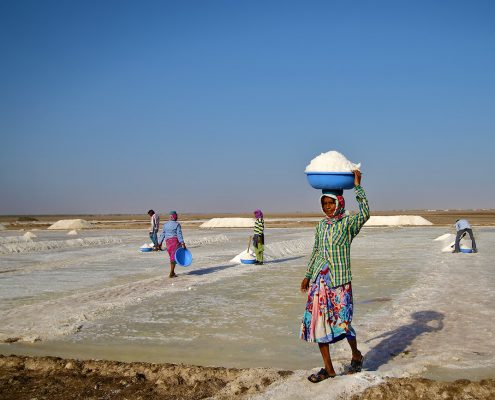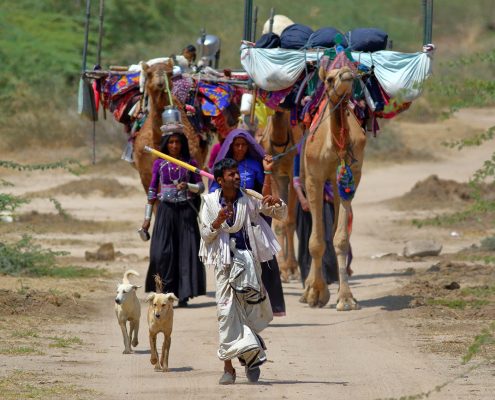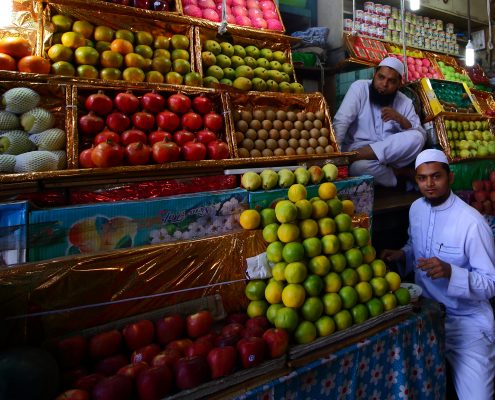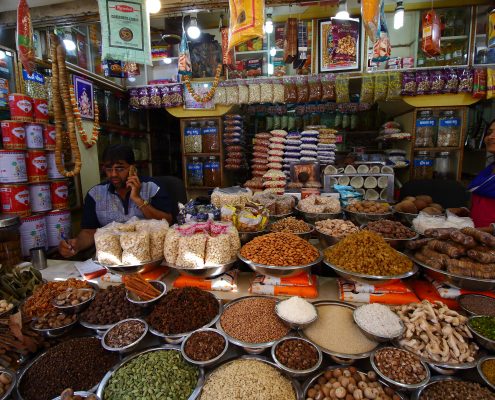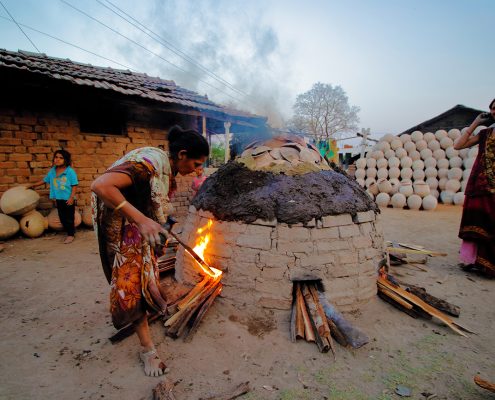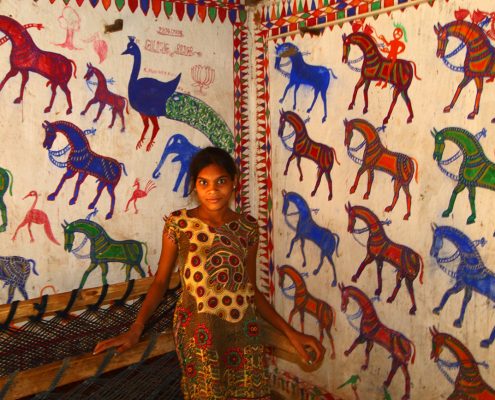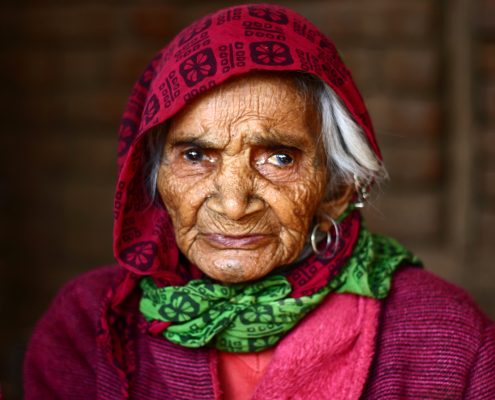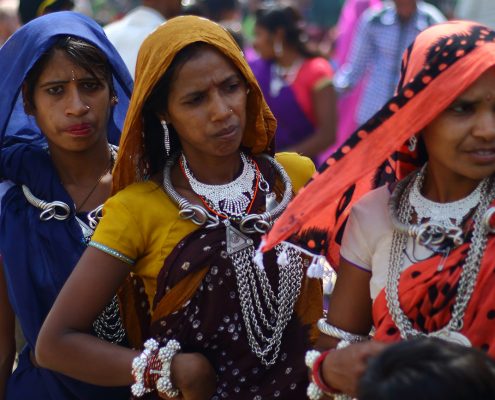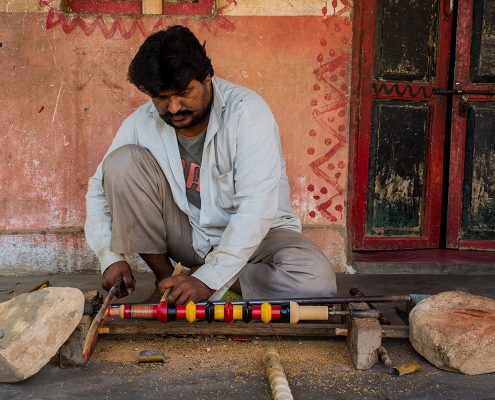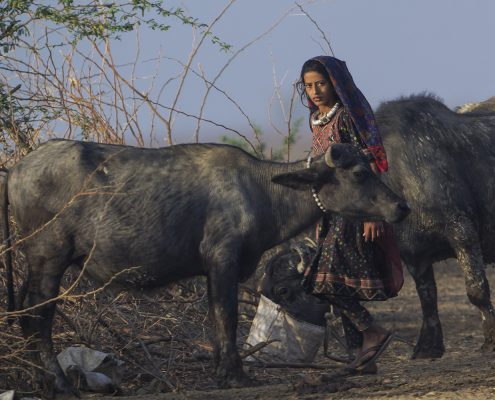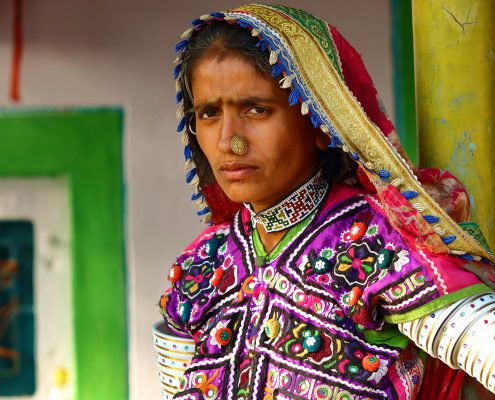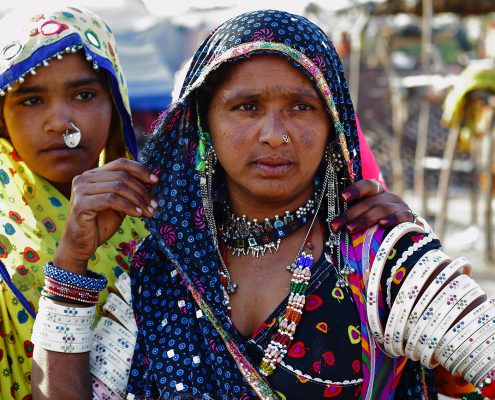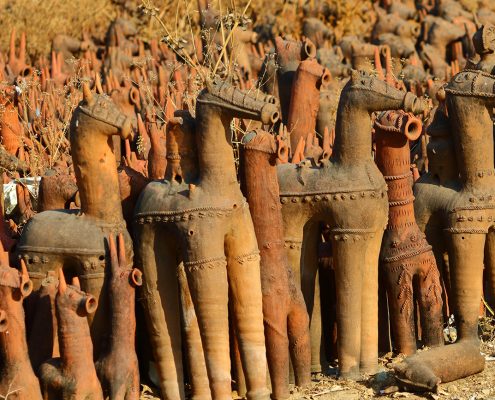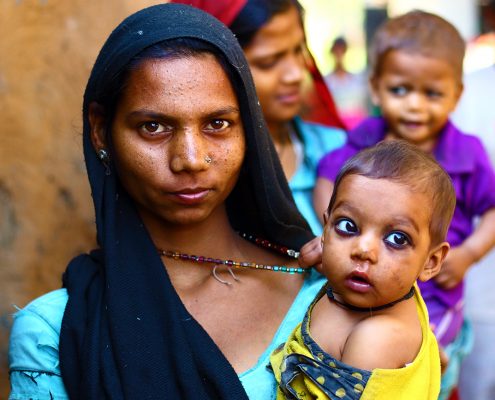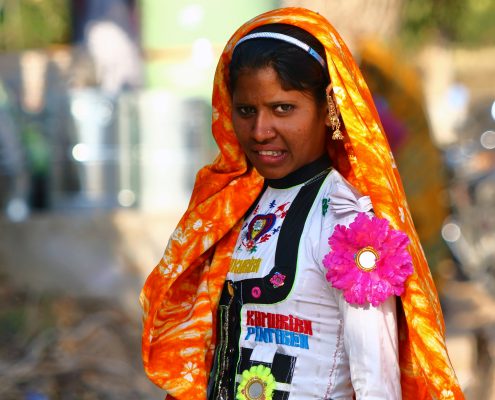The Culture of Gujarat
Gujarat – The Citadel of 6000 years old Harappan Civilization, Land of Colorful Nomadic and Wandering communities, located at confluence of ancient Spice and Silk Route, melting pot of cultures, religions, traditions and world views, land of Lord Krishna and Mahatma Gandhi. Explore Gujarat through its enthralling diversity of culture, a vibrant history & traditional practices.
Palanpur: (Aravalli Hills)
On the edge of Aravalli hills, Palanpur is a remote and unexplored destination to meet various tribes and pastoral communities. The Garasia and Bhil tribals follow unique religious beliefs; the worship of mountains and goddess. The tradition of offering clay horses to god as a vehicle of their wishes and prayers is kept alive in their communities. Meeting nomadic Banjara community herding their numerous cattle and sheep is an experience to cherish. The challenges they face in the light of globalisation and urbanisation and how they have kept their traditions alive is an admirable story of resilience. The people of Rabari community of north Gujarat are semi nomadic and live in large families.
Bhuj and Banni Grasslands: (Kutch)
Kutch is a vast arid landscape which bred numerous hardy communities and their equally amazing history of survival and endurance. The nomadic and semi nomadic pastoral communities like Mutwa, Dhaneta and Fakirani Jats, Node, Dhebaria Rabari, etc can be seen with their herds of buffaloes, goats, sheep and camels. The farming communities like Garasia Jats, Ahirs, etc and many other communities like Meghwals, Mochi, Khatri are involved in their traditional crafts like leather work, block printing, tie-dye, etc. Each community has its own clothing and embroidery that distinguish them from one another and one can meet them in their villages around Bhuj. Few other notable sites to visit in Kutch are the white rann, Harappan civilization site Dholavira, Kutch craft museum, Aina Mahal, etc. The incredibly rare birds like Grey Hypocolius, Great Indian Bustard and white naped Tit are found in this region as well.
Dasada: (Little Rann of Kutch)
Located in little rann of Kutch, Dasada and its surrounding villages offers an insight into a variety of cultures and handicrafts. The pastoral Kharapat Rabaris are known for their exquisite embroidery interspersed with small mirrors. The Bharwads are colourfully dressed pastoral people, usually shepherds and goatherds. The Bharvads and Rabari continue to herd cattle and live by dairy farming. The weavers on Dasada are known for a unique weaving technique called Tangalio. Woven on a narrow width pit loom, the Tangalio has a single warp but the weft has extra knots. The nomadic Mir community make artistic bead work bangles. Dasada is known for its Wild Ass Sanctuary as well. The sanctuary is last refuge for Indian Wild Ass. The wetlands near sanctuary are the wintering ground for hordes of migratory birds like Greater and lesser flamingo, pelicans, ducks, etc. The salt pan workers in the sanctuary produce about 65% of India’s salt.
Junagadh: (Saurashtra)
Junagadh and Gir region of saurashtra makes an ideal destination for wildlife and culture enthusiasts. Gir national park is home to extremely rare Asiatic Lions. Along with that, there are numerous other mammals and avifauna. Gujarat has a small community of people of African origin called the Sidi. The Sidi community follows some of the African traditions; a reminiscent of their cultural heritage amalgamated with sufi rituals. The maldhari community are the pastoralists cohabiting the same landscape with lions. Theirs is a story of harmony and coexistence with nature. Junagadh has some beautiful monuments built during Nawab’s rule like Mohabbat Makbara as well as the Buddhist caves and Ashok’s edict.
Jambughoda and Chotta Udepur
Jambughoda is an area rich in tribal culture. The Nayaks and Rathwa community of Jambughoda live around the protected areas of Jungle. The Rathwa community have a tradition of painting their walls the Pithora are coloured by local shamans who, after an elaborate ceremony and festivities, paint the wall for a week. They also make pottery horses as offering to gods. A visit to their weekly markets is an unforgettable experience. There is jewellery, farm produces to barter, earthenware, etc along with selling of goats, fowls and bullocks. Their festival Kanwath is a gathering of 100 villages at Bhagoria where you can see men and women decked in silver jewellery, dancers with peacock feathers, local performers walking barefoot on hot coals, etc. Close to Jambughoda is the UNESCO world heritage site of Champaner. Some of India’s finest Indo-Islamic Monuments are located here. The well-known ones are the Jami Mosque, Kevda Mosque, Sahar ki Masjid, Nagina Mosque and Pavagadh fort.
Dangs: (South Gujarat)
Dangs is a small district in south Gujarat. Entirely populated by various tribal communities Dang is the starting of Western Ghats. The bamboo and teak forest of Dangs is home to a large variety of birds, butterflies, insects and reptiles. The tribes of dangs are very colourful and celebrate many festivals. One can visit the weekly market to observe the people and look at the variety of artefacts, ornaments, livestock and madhuca flowers sold there. The festival Dang Darbar is celebrated for 3 days to welcome the spring season. The men and women dance and find partners. With flowers blooming everywhere and people dancing to the tunes of Dhol, it is a riot of colours in entire dang.
Suggested Cultural Experiences (* the itineraries are suggested routes, all itineraries can be modified as per group’s interest and time duration)
A 15-day tour begins with understanding the heritage and religious diversity of UNESCO world heritage city of Ahmedabad. We further explore the lives and beliefs of tribal cultures at Palanpur, Dangs Jambughoda and Gir. We meet the artisan communities and migrating, pastoral groups at Rann of Kutch. The tour covers 3 UNESCO world heritage sites, tracing the path of evolution of 4000-year-old craft traditions and, visit the breath-taking white desert. Approximate cost of the tour is 3000 USD (2430 GBP) per person inclusive of room on 2 sharing with 3 meals, local transfers by a/c vehicle, expert guide, entrance fees. A mix of heritage properties, homestays and eco-friendly luxury lodges will guarantee an amicable and immersive cultural experience.
- Cultural Diversity of Gujarat: 15-17 nights
Ahmedabad (2 nights) – Aravalli (2 nights) – Little Rann of Kutch (2 nights) – Greater Rann of Kutch (3 nights) – Gondal (1 night) – Gir (2 nights) – Palitana (1 night)- Jambughoda(2 nights) – Dangs (2 nights) –Ahmedabad/Mumbai
- Short Tours / Photo Tours (4-10 nights)
- Ahmedabad (2 nights) – Little Rann of Kutch (2 nights) – Araavali (2 nights) – Ahmedabad
- Ahmedabad (2 nights) – Little Rann of Kutch (2 nights) – Great Rann of Kutch (3 nights) – Ahmedabad
- Ahmedabad (2 nights) – Jambughoda (2 nights) – Dangs (3 nights) – Mumbai
- Ahmedabad (2 nights) – Jambughoda (2 nights) – Little Rann of Kutch (2 nights) – Great Rann of Kutch (3 nights) – Ahmedabad / fly out to Mumbai
Soar Excursions specializes in designing tailor made itineraries to specifically justifying your interest. Highly experienced and qualified cultural experts handle all our tours. The tours are inclusive of all meals, all excursions and a/c vehicles for all surface transports.


